Hiking between Margeride and Gevaudan |

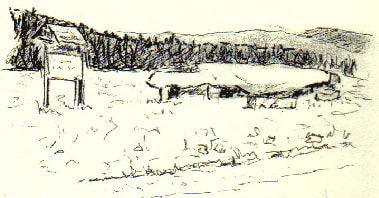 Due to its railway location, La Bastide Puylaurent remains for us a well-placed starting and return point in the Northeast of Lozere at the border of Ardeche. A vacation spot on the banks of the Allier, 3 km from the Abbey of Notre Dame des Neiges. At the crossroads of several GR: GR®70 Stevenson Path, GR®700 Voie Regordane, GR®7 and GR®72.
Due to its railway location, La Bastide Puylaurent remains for us a well-placed starting and return point in the Northeast of Lozere at the border of Ardeche. A vacation spot on the banks of the Allier, 3 km from the Abbey of Notre Dame des Neiges. At the crossroads of several GR: GR®70 Stevenson Path, GR®700 Voie Regordane, GR®7 and GR®72.
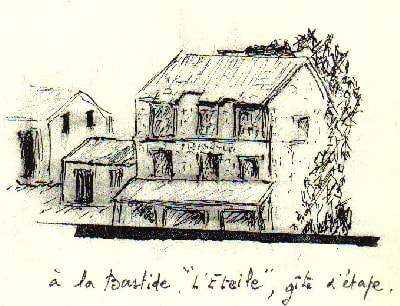 Direct train from Paris via Clermont-Ferrand and Marseille via Nîmes on the "Cevenol". From the village of La Bastide-Puylaurent, we will go directly south along the route of the Arvernes known as Voie Regordane or St. Gilles path, shared with GR®72.
Direct train from Paris via Clermont-Ferrand and Marseille via Nîmes on the "Cevenol". From the village of La Bastide-Puylaurent, we will go directly south along the route of the Arvernes known as Voie Regordane or St. Gilles path, shared with GR®72.
On the way, we encounter the Palet of Gargantua that he had thrown in the village of Thort. It is a dolmen table. Voie Regordane: "Reg" means river and "ourdan" line, path. It took several centuries before the name Regordane was generalized to this path coming from Languedoc to Auvergne.
The sky becomes vaster, the earth too, and the color purer. To the east, the peaks of Vivarais, to the west, the heights of Mont Lozere and the slopes of Goulet. Land of broom, bright yellow, and land of heather, purple. Soon we see La Garde Guerin, its walls and its tower standing in the desert...
La Garde Guerin, a small fortified village perched on the heath, stands flat in the only vastness. At the entrance to the medieval village, this simple cross facing the vast plateau welcomes the traveler.
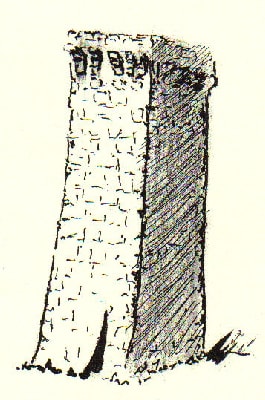 In a text written in the 12th century, in late Latin, one can read: "castrum quod vocatur la Garda", the stronghold that is called La Garde. It is not known exactly when the name Guerin was added to the name La Garde. It is generally believed that the lords who settled in La Garde in the 12th century were Guerin. "Guerin" is a common surname among the three baronies of Randon, Apcher, and Tournel.
In a text written in the 12th century, in late Latin, one can read: "castrum quod vocatur la Garda", the stronghold that is called La Garde. It is not known exactly when the name Guerin was added to the name La Garde. It is generally believed that the lords who settled in La Garde in the 12th century were Guerin. "Guerin" is a common surname among the three baronies of Randon, Apcher, and Tournel.
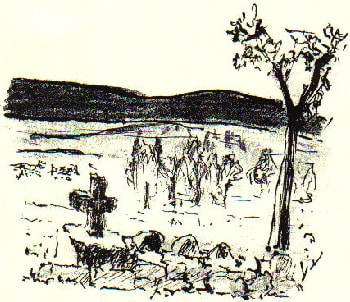 The existence of the Guerin is attested in a donation act to the Abbey of Gellone, today Saint-Guilhem du desert, dated 1054. It is a Guerin from Tournel who took charge of this castle, becoming its lord. The Tournel was indeed solidly established in Villefort and possessed in La Garde.
The existence of the Guerin is attested in a donation act to the Abbey of Gellone, today Saint-Guilhem du desert, dated 1054. It is a Guerin from Tournel who took charge of this castle, becoming its lord. The Tournel was indeed solidly established in Villefort and possessed in La Garde.
The Lords of Tournel were masters of Mont Lozere and part of Sauveterre. They held garrisons in several strategic points and soon turned all their attention to this unique access route connecting the South to the Central Massif. One did not pass over the banks of the Rhône, which have always been a well-guarded border.
The high square tower is the last vestige of the feudal castle dominating the village and the gorges of Chassezac. The road of the Arvernes and its border of granite blocks lies at the foot of La Garde Guerin. From the 11th century, La Garde Guerin appears as a strategic place where the Knights "Pariers", equal in rights and duties, shared the hospitality and the benefits of toll rights on the ancient road, Voie Regordane.
In 1965, La Garde Guerin was an almost abandoned village, where a few farmers struggled to survive. However, there was a very rich architectural heritage to preserve. It was possible to restore this unique village, to recreate an economic and social living environment. Thanks to the Architecture Directorate in Paris, La Garde Guerin was selected as a pilot village and benefited from significant grants.
The best image of La Garde Guerin is that of Château du Roure. "Everything is very beautiful on this limitless heath, which releases the blue mountains" ... "castle of the soul or inner castle" in reference to the book by Saint Teresa of Avila.
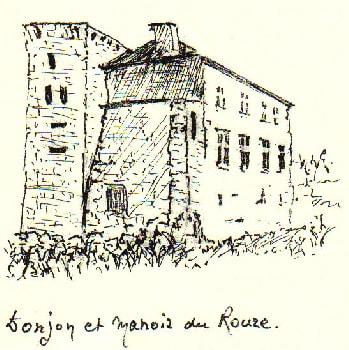 Château du Roure is just a stone's throw from La Garde Guerin, in bird flight. But it is separated by the jagged, deep, and very spectacular Gorges du Chassezac in its winding course towards Ardeche.
Château du Roure is just a stone's throw from La Garde Guerin, in bird flight. But it is separated by the jagged, deep, and very spectacular Gorges du Chassezac in its winding course towards Ardeche.
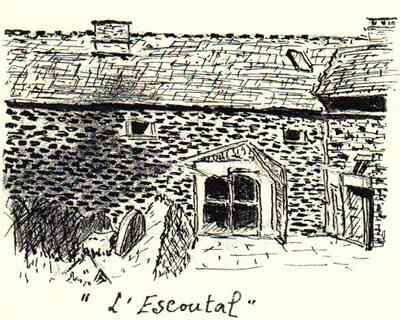 Numerous loop walks, swimming, canyoning, climbing. A tributary of Ardeche, the Chassezac runs through very deep granite gorges (400 m) under the medieval village of La Garde-Guerin, in the Cevennes National Park, 35 km east of Mende and 40 km WSW of Aubenas.
Numerous loop walks, swimming, canyoning, climbing. A tributary of Ardeche, the Chassezac runs through very deep granite gorges (400 m) under the medieval village of La Garde-Guerin, in the Cevennes National Park, 35 km east of Mende and 40 km WSW of Aubenas.
Villefort, an important village since the Middle Ages. At the foot of Mont Lozere at 580 m altitude in the narrow valley of Deveze. In the 17th century, Villefort was surrounded by ramparts, ditches, and gates. One, that of Portalet to the north, the other, that of Cledon to the south towards the Cevennes.
The village was crossed by the Regordane path. It has preserved a district called "Castel-Vieil", old houses, windows from the 14th and 16th centuries, the 14th-century St. Jean bridge, traces of past times. The city is today very peaceful, a bit lifeless.
The old main street of Villefort with its characteristic houses of the architecture justly called "regordanne". Although it belonged until the Revolution to the Diocese of Uzes, the history of Villefort was always mixed with that of Gevaudan. Froidour, a high official of Colbert, came to inspect the Regordane path in 1668, and one can read in the writings of the time that Villefort was at a strategic point between the cities of Alais and Langogne.
The GR®68 from Villefort to Le Bleymard. This mule path allows access from Villefort to the capital of Gevaudan, Mende. As soon as you leave Villefort, it penetrates into Gevaudan. Sitting on the edge of Mt Lozere, it successively crosses Bergognon, Pomaret, and other hamlets before reaching Cubieres.
 Cubieres has its confluence with the Altier, which has its source at Mont Lozere at 1639 m, describing numerous meanders before flowing into Chassezac at 350 m altitude. On the slopes of Mt Lozere, Cubieres lives in the peace of its valleys.
Cubieres has its confluence with the Altier, which has its source at Mont Lozere at 1639 m, describing numerous meanders before flowing into Chassezac at 350 m altitude. On the slopes of Mt Lozere, Cubieres lives in the peace of its valleys.
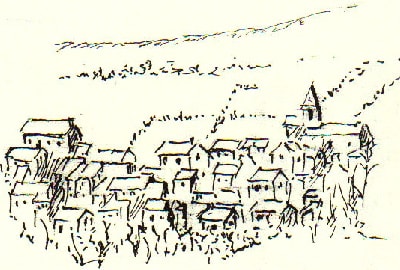 The small heritage. The ironworking profession called "ferradou" in Occitan. It was used to shoe oxen and cows. They would always shoe a pair of cattle accustomed to working together to haul timber or for various agricultural tasks. A witness to a little mechanized past.
The small heritage. The ironworking profession called "ferradou" in Occitan. It was used to shoe oxen and cows. They would always shoe a pair of cattle accustomed to working together to haul timber or for various agricultural tasks. A witness to a little mechanized past.
At the foot of Mt Lozere flourish the deciduous oaks, elms, linden trees... The Mediterranean green oak was not as close to Mont Lozere as it is today.
Man cleared the Cevennes in the Iron Age, a little later in our Mont Lozere. It is at the beginning of our era; he loses these small Arvernes bronzes on which scholars reconstruct the names or monograms of leaders like Epaenactus...
In the Massif of Mont Lozere. An architecture linked to the roots of the soil, integrated into the striking sites of the silent hamlets.
Stone chimney base, a slate hat placed on 4 or 6 posts topped with a heavy stone to withstand the wind. In the reflections of the old roofs that moss has eaten away. Le Bleymard has settled over time to command the entrance to its beautiful valley.
Le Bleymard, along the Combe Sourde stream. It is one of those places where the man who seeks and will seek more and more rest, calm, will find those simple joys that nature gives him.
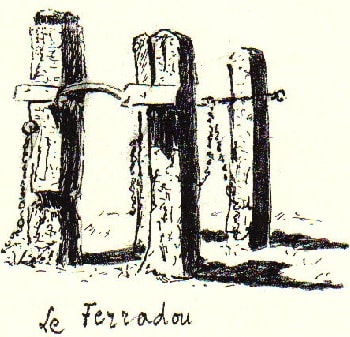 "From Bleymard, in the afternoon, although it was already late, I set out to conquer a corner of Lozere. A poorly defined stony cart path guided my walk. I encountered at least half a dozen ox-drawn carts descending from the woods, each loaded with a whole pine for winter heating." R.L. Stevenson
"From Bleymard, in the afternoon, although it was already late, I set out to conquer a corner of Lozere. A poorly defined stony cart path guided my walk. I encountered at least half a dozen ox-drawn carts descending from the woods, each loaded with a whole pine for winter heating." R.L. Stevenson
From Bleymard, a mining village of which few traces remain, one will ascend by a path into the Goulet forest massif to reach the hamlets of Bonnetes and Nathalie's lodging "l'Escoutal".
"Before me opened a shallow valley and, behind, the chain of the Lozere mountains, partially wooded, with quite hilly slopes, yet overall with a dry and sad configuration. Hardly any signs of cultivation.
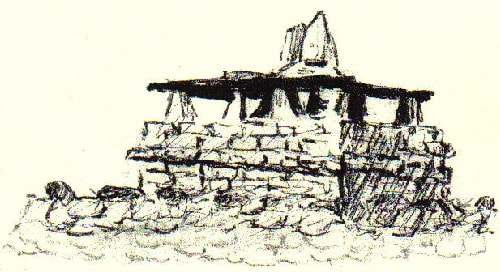 However, around Bleymard, the road coming from Villefort via Altier to Bagnols les Bains and Mende crossed a series of meadows planted with tall poplars and everywhere resonated with the bells of sheep and herds. ...If the evening is beautiful and gentle, there is nothing better in life than to stroll in front of the door of the Inn..." Robert Louis Stevenson.
However, around Bleymard, the road coming from Villefort via Altier to Bagnols les Bains and Mende crossed a series of meadows planted with tall poplars and everywhere resonated with the bells of sheep and herds. ...If the evening is beautiful and gentle, there is nothing better in life than to stroll in front of the door of the Inn..." Robert Louis Stevenson.
In the vicinity of Belvezet, as far as the eye can see, it is a succession of chains and hills... "If you climb a hill, it is only to see new lines of more distant peaks. ...And now, you must ask yourself if, when all is done, you wouldn't be better off sitting at home by the fire and being happy thinking..." R.L. Stevenson
The journey ends at the station of Belvezet and its railway connecting Mende to La Bastide-Puylaurent via Allenc, Belvezet, and Chasserades. The line is often blocked by snowdrifts in winter, and protective tunnels had to be built. It is an excellent, inexpensive means of transport, very pleasant and unique in France. You can also board the train with your bicycle. To stop, you must signal your presence on the platform with a big wave of your hand. by M. Pasquier
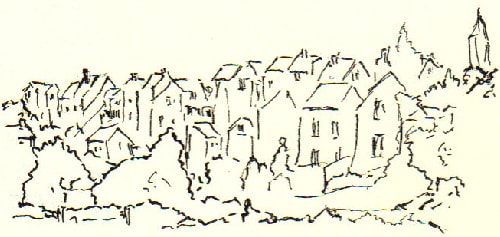
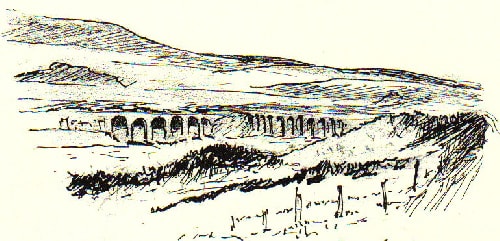
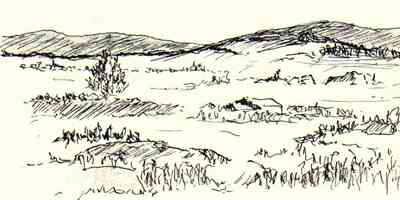
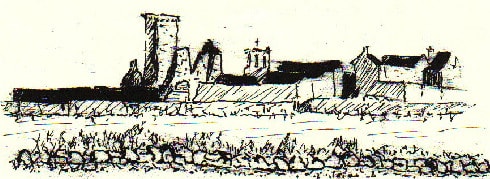
Former holiday hotel with a garden along the Allier, L'Etoile Guest House is located in La Bastide-Puylaurent between Lozere, Ardeche, and the Cevennes in the mountains of Southern France. At the crossroads of GR®7, GR®70 Stevenson Path, GR®72, GR®700 Regordane Way, GR®470 Allier River springs and gorges, GRP® Cevenol, Ardechoise Mountains, Margeride. Numerous loop trails for hiking and one-day biking excursions. Ideal for a relaxing and hiking getaway.
Copyright©etoile.fr